Hardware Prerequisites
The Data Center Console is intended to be installed on an independent server and should not be installed on the same host with CDP.
Software Prerequisites
- CDP Server Upgrade – Before installing DCC, you should upgrade all CDP servers that you intend to register with DCC to version 3.18. See Upgrading Enterprise Edition for Windows, Upgrading Enterprise Edition for Linux.
- MySQL Database Creation – DCC is a MySQL-based application and requires a customer-supplied MySQL database instance and schema in order to properly install and run. The DCC installation and upgrade will handle all table creation and any upgrade data migration. However, customers are responsible for the general health, maintenance, and availability of the MySQL database. A MySQL database instance and user account should be created in advance with account permissions allowing you to create, read, update, and delete objects within the account. DCC requires the MySQL database instance to be supported by the InnoDB storage engine.
For instructions on how to create MySQL user accounts and set their permissions, see http://dev.mysql.com/doc/refman/5.5/en/user-account-management.html (external link).
For instructions on how to install MySQL, see http://dev.mysql.com/doc/refman/5.5/en/installing.html (external link).
| Note Make sure that all necessary ports are opened. For more information see how to configure R1Soft Products Network Ports |
Recommended System Requirements
- Operating System: 64-bit only, Windows Server 2008 R2, or Linux 2.6
- Physical Memory: 4 GB
- Free Disk Space: Not less than 10 GB
Creating a MySQL Database on Windows
1. Launch the MySQL command line.
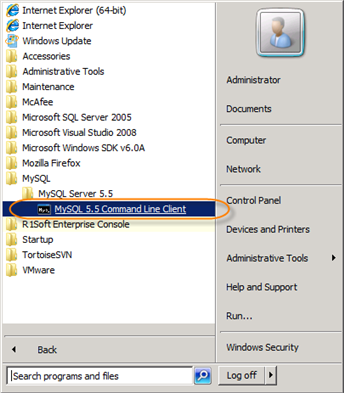
2. Input your MySQL account password and press <Enter>.

3. Use the following command to create a database:
| Note Later you will have to input that name in the server.properties file. |
You should see the following message:
Creating a MySQL Database on Linux
Log in to MySQL.
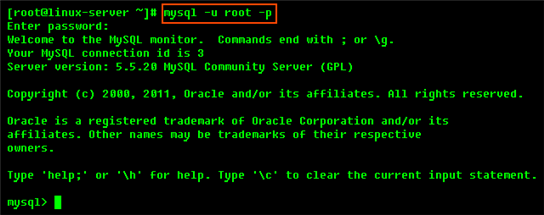
Display the list of existing databases.
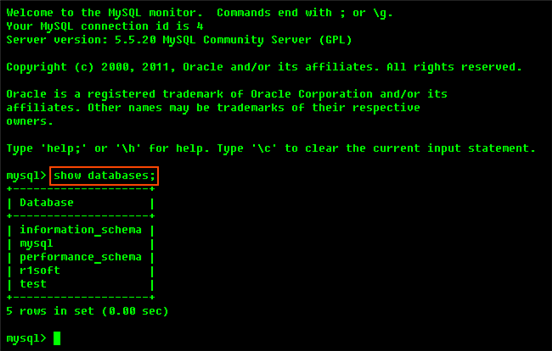
Use the following command to create a database:
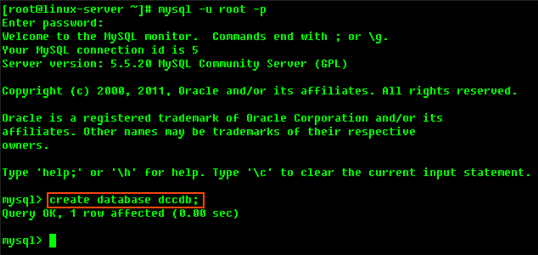
Check if the database has been created successfully.
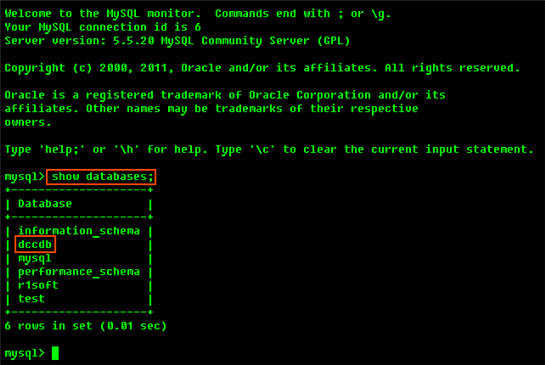
The next step is described in:
